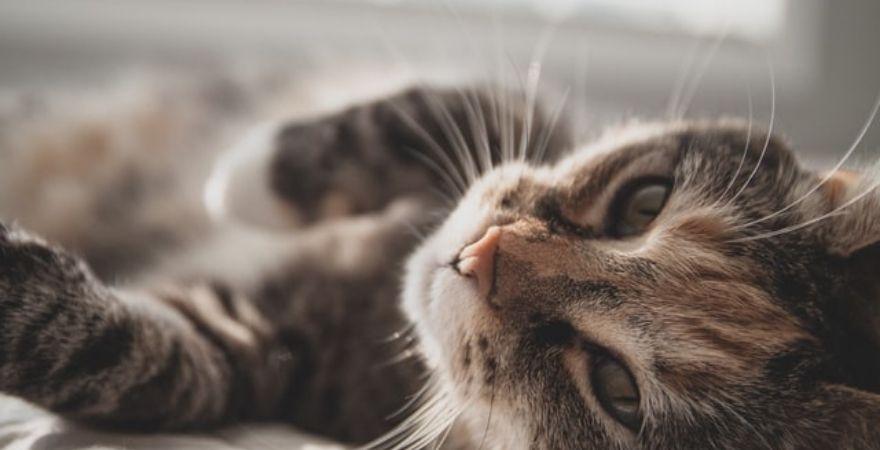A task detested by owners and cats alike, trying to get our cat to take their medicine can be stressful. Indeed, you may find you psych yourself up to ‘the big event’ for days before. Most cats will sense that anxiety. They are then experts at making themselves disappear when it comes time to having their pill.
According to a recent survey, one in four pet parents struggled so much to give their cat medication that they had to abort the task. Despite this, the vast majority say they prefer administering pills over a liquid form of the medicine.
Read on to learn some top advice that should make the event less of an ordeal. With a few simple changes to the routine, all cat owners will soon be experts at how to give a cat a pill.

The Best Ways to Give A Cat a Pill: Methods That Work
Finding a technique that works for you and your pet can be like finding the holy grail. A no-nonsense approach tends to help best and try to act confident (even if you don’t feel it!). Each cat is an individual, and some will respond better to certain techniques than others. Feel free to try a few until you hit on the one that works best for you.
- ‘The old fashioned’. This method works best for laid back, friendly cats. Sit them in your lap or place them on a table and hold your cat securely. Gently open their mouth. Lift up the jaw with a thumb and index finger of your dominant hand placed above each upper canine, tilting cat's head back. With the non dominant hand, place the pill directly at the back of the throat and then shut cat's mouth until they swallow and gently rub their nose. Blowing on it can help as well. Generally it has to stimulate swallowing. Of course, just like for any oral medication, be attentive for vomiting afterwards.
- ‘The easy way out’. Hiding a tablet in food that the cat eats can take a lot of the hassle out of this task. Warm and tasty treats like chicken and wet cat food work best. Put a small portion of the meal into cat's mouth to ensure you can see when the tablet is gone (aka the cat swallowed it) down the throat.
- ‘The big guns’. A pill popper is a plastic instrument that enables you to place the pill at the back of your cat’s mouth. This keeps your fingers safe and is a great option for feistier felines.
- ‘The hiding place’. A pill pocket is a tasty treat in which you hide the tablet. This helps best for food-driven, greedy cats. These guys are likely to munch away without asking too many questions.
- ‘The back-up option’. Remember, some cats are very difficult to pill and it is never worth risking a finger for. If at-home techniques have failed, call your veterinarian to let them know. They may have you take your kitty in so a vet nurse can pill them. They might also discuss the variant of an alternate medicament type that may be a better fit for your little tiger.
Knowing the Medication is Key
It is not always as easy as crushing your cat’s medicine and putting it in a powder form into their favorite food and walking away smugly. Certain medicines must be given whole. This is the case for most thyroid medication, for example.

Read the Prescription’s Dosage Instructions Twice
Nothing will make your heart sink faster than realizing you have given your cat an overdose. This can cause serious side effects and could make your kitty very unwell indeed. Under-dosing is also problematic. It can mean that the medicine you have given is not effective. When preparing your kitty’s pills, read the instructions twice. If you’re unsure about the instructions, don’t hesitate to call your veterinarian to confirm the correct dose.
Double check how long the course needs to be given for and how frequently each pill should be offered. While most pills are given daily, some will be given e.g. every 12 hours.
If your cat is on a repeat prescription and the written dose has changed, question this. It is sensible to confirm a dose change with your vet, in case of a label error.
Keep Time Release Medications Whole
Though you may usually break up your cat’s wormer, not all pills can be broken up to a fine powder in this manner. Natural action medications do not help effectively unless given whole. This can be tricky as placing these in a cat’s food bowl often results in the cat eating around them. To avoid this, consider using a ‘Pill Pocket’ or your own hand to give these whole medicines.
Check if Medication Should Not be Accompanied by Food
Depending on what you are giving, some pills need to be accompanied by treats. Others should be given on an empty stomach. If your vet hasn’t specified which, give them a call to double check. It may be that it doesn’t matter either way but it’s reasonable to ask.
As one example, oxytetracycline can cause serious damage to the food pipe if given incorrectly. Owners are advised to give their cats water after administering the tablet. This prevents it lodging in the food pipe and causing a stricture.
Hopefully this article has given you some food for thought. With a little practice, perhaps you will- dare we say it- be excited at the prospect of giving your cat a pill.
Dr. Linda Simon, BVMS, MRCVS
Veterinary surgeon,Doctor Linda Simon MVB MRCVS is a locum veterinary surgeon who has worked in London for the past 8 years. She graduated top of her class in small animal medicine from UCD, Dublin. She is currently a member of the Royal College of Veterinary Surgeons.



